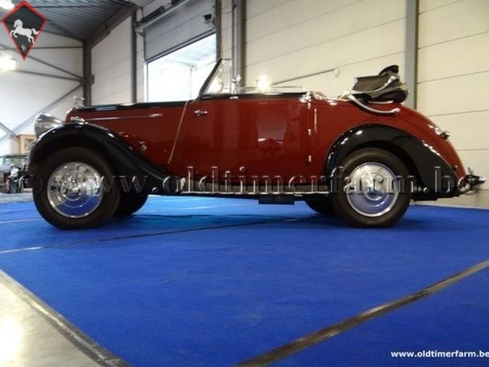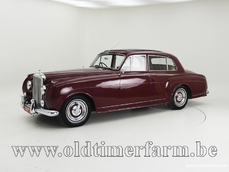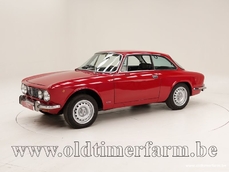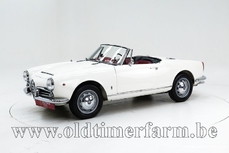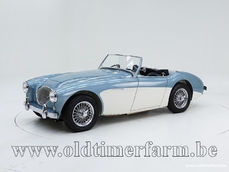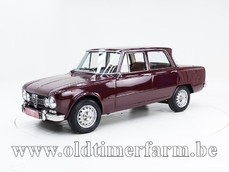Humber 12 Drophead Coupé Red/Black '37 1937
General description :
The first car was produced in 1898 and was a three-wheeled tricar with the first conventional four-wheeled car appearing in 1901. The company had factories in Beeston near Nottingham and Coventry. The Beeston factory produced a more expensive range known as Beeston-Humbers but the factory closed in 1908 after financial problems. Before the First World War a wide range of models were produced from the 600 cc Humberette to several six-cylinder 6-litre models. In 1913 Humber was the second largest manufacturer of cars in the United Kingdom. The Humber Motor Works in Coventry still survives—a rare thing as the majority of the city was destroyed in the November 1940 air raid. In 1925 Humber moved into the production of commercial vehicles with the purchase of Commer. In 1928 Hillman was added but independence ended in 1931 when the Rootes Brothers bought a majority shareholding. During World War II, several armoured cars were produced under the Humber name, along with heavy-duty "staff" cars. In the postwar era, Humber's mainstay products included the four-cylinder Hawk and six-cylinder Super Snipe. Being a choice of businessmen and officialdom alike, Humbers gained a reputation for beautifully appointed interiors and build quality. The Hawk and the Super Snipe went through various designs, though all had a "transatlantic" influence. They offered disc brakes and automatic transmission at a time when these fitments were rare. A top-flight model, the Imperial, had these as standard, along with metallic paintwork and other luxury touches. The last of the traditional large Humbers were sold in 1968, when Chrysler, who by then owned the Rootes group, pulled the plug on production. Several V8 models had been in pre-production at this time, and several of these test examples survive today. Its last car was the second generation of Humber Sceptre, a badge-engineered Rootes Arrow model. The marque was shelved in 1976 when all Hillmans became badged as Chryslers. The Hillman Hunter (another Arrow model) was subsequently badged as a Chrysler until production ceased in 1979 when Chrysler's European division was sold to Peugeot and the marque renamed Talbot. The Talbot marque was abandoned at the end of 1986 on passenger cars, although it was continued on vans for six years afterwards. Introduced in 1933, the '12' was powered by a 1,669cc four-cylinder sidevalve engine that in enlarged, overhead-valve form would still be in production over 30 years later. Coupled to a four-speed gearbox, this versatile power unit went into an entirely conventional X-braced chassis featuring semi-elliptic springing at both ends and Bendix cable brakes. Pressed Steel provided the standard six-light saloon body while the range also included the two-door Vogue saloon, a tourer and a drophead coupé. In 1935 the '12' was updated and restyled, gaining a new frame, an all-synchromesh gearbox and a more streamlined body with integral boot and vee-shaped radiator grille. Production ceased in 1937. SpecificationsBodyworkLength : cm (in): 371 (146) Width : cm (in): 160 (63) Height : cm (in): Wheelbase : cm (in) : 251 (98.7) Weight: kg (lb) : 1245 (2748) Mechanics. Displacement : straight four 1669 cc (102 cid), front-mounted Valve gear : 8 Fuel system : 1 carburettor Gearbox : manual Driven wheels : rear-wheel drive Maximum power : 42 bhp at 3800 rpm Maximum torque : Maximum speed : 109 km/h (67 mph) For more pictures sroll down.This car is just in at Oldtimerfarm, Aalter Belgium. Steenweg op Deinze 51C. Teusday-Saterday 10-17h (no appointment needed) Sunday: closed. Monday strictly on appointment. We specialize in consignment sales of collection cars. We are proud we can offer this car for sale. A more detailed description will soon follow. In the meantime you can have a look at the very ample photo coverage on the website. Of course Xavier or Olivier will be very happy to give you all possible explanations by phone on +32472401338.Meet us at:You can meet us at these events where we will show a sample of our stock.13-14/02/2016 Flanders Collection Car Gent04-06/03/2016 Antwerp Classic Salon06-10/04/2016 28th Techno-Classica Essen - Germany29-01/05/2016 Open Door Event @OLDTIMERFARM
http://www.oldtimerfarm.be/en/collection-cars-for-sale/1835/humber-12-drophead-coup-37.php
1937 Humber 12 Drophead Coupé Red/Black '37 is listed sold on ClassicDigest in Aalter by Oldtimerfarm Dealer for €24500.
Car Facts
Car type : Car Make : Humber Model : 12 Model Version : Drophead Coupé Red/Black '37 Engine size : 0.0 Model Year : 1937 Sub type : Coupé Location : Aalter Vehicle Registration : Normal
Sold
Seller Information
Sold
Other cars listed for sale by this dealer
About Humber
Humber, now there's a name that carries the elegance of a bygone era, the refinement of a true British classic. Let me take you on a journey through the history of Humber, a brand that embodied the spirit of Britain on wheels.The Birth of a Legacy:
Humber had its roots in the 19th century when it started as a bicycle manufacturer. But it didn't take long for them to realize that the future was in automobiles. They transitioned to car production in the early 20th century, and that's where the magic began.
Quality and Craftsmanship:
Humber was all about quality and craftsmanship. Their cars were meticulously designed, and no detail was too small to escape their attention. The result was vehicles that exuded class and sophistication, truly fit for the British upper crust.
The Humberette:
One of their early successes was the Humberette, a compact car that was quite popular in its time. It may have been small, but it was a big step for Humber in establishing itself as a serious automobile manufacturer.
The Snipe and Hawk:
Humber hit its stride in the 1920s with the Snipe and Hawk models. These cars were known for their performance and luxury. They were often seen gliding down the English countryside, a symbol of grace and power.
The Pullman Limousines:
Humber was also known for its Pullman limousines, a favorite of British royalty and dignitaries. These cars were like rolling palaces, offering the ultimate in comfort and style.
Post-War Challenges:
After World War II, Humber faced challenges like many other British automakers. The changing automotive landscape and financial difficulties led to a merger with the Rootes Group. While Humber continued to produce cars, it was never quite the same.
Legacy and Fond Memories:
Today, Humber may not be a name you hear on the streets, but it lives on in the memories of those who appreciate the golden age of British motoring. The brand represents a time when British cars were synonymous with luxury and elegance.
So, raise a cup of tea and tip your hat to Humber, a true British classic that may have faded from the roads but will forever remain a symbol of style and sophistication in the world of automobiles.
